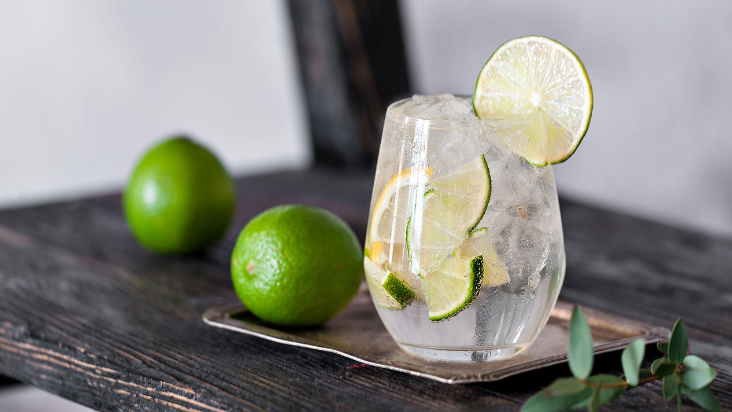People all over the world enjoy vodka and gin as two popular high-alcohol spirits. Despite their similarities in appearance and alcohol content, the two have some significant differences. From their base ingredients and distillation methods to their flavor profiles, there are several distinguishing characteristics between the two spirits. Whether one loves vodka, is a gin enthusiast, or is just curious browsing the liquor store shelves, we’ll delve into the unique features of these spirits.
Key Differences Between Vodka and Gin
Base Ingredient

Producers make vodka by mixing grains such as corn, wheat, or rye with water to create a fermented mash. They then add yeast to the mash to initiate the fermentation process. The mixture is distilled to remove impurities and create a high-proof, clear spirit like Meili Vodka. Some vodka manufacturers also use potatoes as their base ingredient, resulting in a slightly sweeter and creamier taste.
Gin is made by distilling a mash of grains or malted barley and then adding botanicals, particularly juniper berries, such as in New Amsterdam Gin. They add various botanicals, including coriander, citrus peel, angelica root, and others, to the distilled grain spirit during the distillation process. Then, they redistill the mixture to create a fragrant and flavored gin.
Taste
Vodka typically has no odor or flavor and a neutral taste. This makes it versatile and easy to mix with other ingredients in cocktails. It does not alter the flavor profile, especially Tito’s Vodka Handmade. However, some high-quality vodkas may have a subtle sweetness or grainy flavor. That is due to the quality of their ingredients and the distillation process.
On the other hand, gin has a distinct flavor and aroma due to the botanicals used in its production, especially juniper. Gin gets its flavor from a variety of botanicals. These can include herbs, spices, fruits, and roots. The resulting flavor profile can range from earthy and spicy to citrusy and floral. Juniper berries are often the most dominant botanical used in the gin, giving it its characteristic piney taste. Tanqueray Imported Gin is a popular example of a gin with a strong juniper flavor. This juniper flavor sets gin apart from other spirits and gives it a unique character. The distinctive taste of juniper is present in all types of gin, but different brands may use other botanicals to create their unique flavor profile.
Production
When making vodka, distillers boil a fermented grain or potato mash, creating a vapor. They collect and cool the vapor to produce a clear, high-proof spirit. This process can be repeated up to 10 times or more to achieve high purity and eliminate undesirable flavors or impurities. The resulting vodka is often filtered through activated carbon or other materials, which refines the taste and texture. This filtration process contributes to the popularity of vodkas like Russian Standard Vodka.
To make gin, producers first distill a neutral spirit similar to vodka. Next, they infuse the spirit with botanicals through “steeping” or “maceration.” They put the botanicals into a still alongside the neutral spirit, allowing it to steep for several hours to several days, depending on the recipe. Moreover, they also redistill the mixture to produce a clear, flavored spirit, such as Hendricks Gin.
Color

Premium vodka producers sometimes leave some natural colors in the spirit, resulting in a slightly off-white or creamy appearance. They achieve this by using different base ingredients such as wheat or rye. Additionally, some vodka producers may add a minimal amount of flavorings or other ingredients that can contribute to the final product’s color. Amsterdam Vodka Pink Whitney is an example of this, with its fresh pink lemonade flavor and corresponding color. Overall, while vodka is typically known for its clear or transparent appearance, variations in ingredients and production methods can lead to differences in color and flavor.
In contrast to vodka, gin can have a slight yellow-green tint. It is due to the botanicals used in its production. While most gin is clear, the addition of botanicals such as juniper berries, coriander, and other herbs and spices can give the spirit a slight coloration. The color of gin can vary depending on the type and amount of botanicals used. It can also be due to the production methods used by the distiller. A good example in the liquor store is the Aviation American Gin Old Tom. It uses 8 known botanicals.
Alcohol Content

Although vodka and gin typically have a high alcohol content, vodka is generally considered stronger than gin. It has an alcohol content of around 40% ABV (alcohol by volume), while gin is usually approximately 37.5% ABV. This difference in alcohol content can affect the overall taste and mouthfeel of the spirits, as well as their strength in cocktails.
Vodka usually doesn’t have a strong smell or taste. However, some may have a little sweet or spicy flavor. Gin, however, is often distilled to a lower proof than vodka, giving it a smoother and more rounded taste. An example of such gin is Bombay Sapphire Gin. Different brands and styles of gin can vary in alcohol content. However, gin is typically considered a milder spirit than vodka. The choice between vodka and gin in a cocktail largely depends on the drinker’s preference for the taste and aroma of the spirit.
Cocktails
Bartenders use both vodka and gin in various cocktails. However, they typically use them for different types of drinks. Vodka is a popular ingredient in sweet, fruity cocktails. Vodka has a neutral flavor profile that can complement other ingredients without overpowering them. Some of the most famous vodka cocktails include the Cosmopolitan, the Bloody Mary, and the Screwdriver, and Platinum 7x vodka is an excellent choice for such cocktails.
Gin is typically the preferred choice when making classic cocktails like the Martini or Gin and Tonic. These cocktails rely on the unique flavor profile of gin, particularly the juniper, to create a balanced and complex drink. An excellent example of gin used in such cocktails is Seagram’s Extra Dry Gin. Gin’s distinctive botanical flavor adds depth to these drinks and can make them more interesting. Cocktail enthusiasts often prefer gin-based cocktails for their complexity of taste.
Conclusion
While both vodka and gin are clear, high-alcohol spirits enjoyed for centuries differ significantly in their taste, production methods, and versatility in cocktails. These two spirits have distinct characteristics, from their base ingredients and distillation methods to their flavor profiles and historical origins. These differences will help you decide what you would like to buy from the liquor store next time.

One thought on “What are the Differences Between Vodka & Gin?”
Comments are closed.